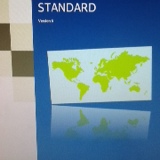Information
-
Document No.
-
Audit Title
-
Client / Site
-
Conducted on
-
Prepared by
-
Location
-
Personnel
22.1 - CLEANLINESS (BASE)
-
Equipment and facilities must be maintained in a clean condition appropriate to its function.
22.2 - CLEAN AS YOU GO (BASE)
-
The site must operate a ‘Clean as You Go’ Policy with personnel responsible for maintaining a clean and tidy working area.
22.3 - PREVENTING CONTAMINATION FOR CLEANING (BASE)
-
Methods of cleaning must not pose a risk of contamination to nearby product, surfaces or staff e.g. through spray generation/aerosol, not contaminating products during high level cleaning etc.
22.3.1 - PREVENTING CONTAMINATION FOR CLEANING (HIGH)
-
High pressure hoses must not be used due to aerosol generation and the movement of debris.
22.4 - CLEANING AREAS (BASE)
-
Designated cleaning areas must be sited so they present no risk to product integrity or safety.
-
Designated cleaning areas must be kept in a hygienic condition with obvious flow of equipment from dirty to clean.
-
Cleaning of equipment must not be carried out in sinks used for hand washing
-
Areas must have sufficient extraction to minimise condensation build up.
-
Equipment must be cleaned off the floor (e.g. on racks or stands).
22.4.1 - CLEANING AREAS (HIGH)
-
High areas must have their own cleaning facility.
-
A procedure must be in place to ensure items are not returned to medium or Base areas for cleaning unless the equipment is subjected to a heating or disinfecting process on return to the High area (e.g. heating cycle in an oven).
22.5 - CLEANING EQUIPMENT (BASE)
-
Cleaning equipment, including mops, must be fit for purpose, in good condition, easily cleanable and not pose a risk of foreign object contamination.
-
Cleaning equipment including hoses must be stored off the floor and away from product and manufacturing lines.
-
All cleaning equipment must be stored in a manner which does not pose a risk of cross contamination. Wall mounted cleaning equipment must be returned in a clean condition.
-
Where floor cleaning equipment is wall mounted it must be stored handles up.
-
The floor contact end of cleaning equipment must be stored so it does not present a contamination risk to product contact surfaces or PPE.
22.5.1 - CLEANING EQUIPMENT (MEDIUM)
-
String mops are not permitted. The use of other types of mop in open food areas must be risk assessed.
22.5.2 - CLEANING EQUIPMENT (HIGH)
-
High area cleaning equipment must be stored clean and dry or in sanitiser/disinfectant.
-
Where sanitiser/disinfectant is used these must be monitored and changed at regular intervals to maintain effectiveness.
-
Mops are not permitted.
22.6 - CLEANING EQUIPMENT SEGREGATION (BASE)
-
Equipment used for cleaning product contact surfaces must only be used for that activity. This equipment must be stored separately from other cleaning equipment.
-
Cleaning equipment used for floors and other areas must be segregated and visually distinctive e.g. drains, toilets, maintenance, offices, canteen etc.
-
Where in place, the rules for segregating cleaning equipment must be prominently displayed for users to see.
22.6.1 - CLEANING EQUIPMENT SEGREGATION (MEDIUM)
-
Cleaning equipment used in open food areas must not be used outside. A system to control this must be in place.
22.6.2 - CLEANING EQUIPMENT SEGREGATION (HIGH)
-
A colour coded system must be in place to identify and segregate cleaning equipment between tasks and across High, Medium and Base areas. The colours used across the site must be distinct (e.g. the same colour must not be used for High area and non-High area floors.)
22.7 - CLEANINGS CHEMICALS (BASE)
-
Cleaning chemicals must be used according to the manufacturers’ instructions and legislative guidelines including temperature, dilution and storage.
-
Cleaning chemicals must be suitable for the environment and their intended use.
-
Cleaning chemicals must be stored securely when not in use.
-
Cleaning chemical storage in production areas must be kept to a minimum.
-
When storing or handling cleaning chemicals all site health and safety guidelines must be followed. These must include any local legislative requirements and, if not covered, the following, although this is not an exhaustive list: - adequate ventilation - bunding of chemicals in storage<br>- powders stored above liquids - PPE to be worn where necessary - data sheets to be completed - handling instructions to be followed - separated where appropriate to prevent risk (e.g. acid/chlorine) - clear signage and labelling in place
22.7.1 - CLEANINGS CHEMICALS (MEDIUM)
-
Phenolic or scented cleaning products must not be permitted.
22.8 - AUTOMATED DOSING (BASE)
-
Chemical dilution checks must be completed at a defined frequency for all automatically dosed equipment (e.g. chlorine.)
22.9 - PRODUCTION EQUIPMENT (BASE)
-
Clean equipment must be stored in manner which prevents re-contamination.
22.9.1 - PRODUCTION EQUIPMENT (HIGH)
-
Where product contact equipment has been stored (even if visually clean) but is not in daily use, it must be re-sanitised prior to use.
22.10 - AUTOMATED WASHING EQUIPMENT (BASE)
-
Tray and rack wash equipment must be operating at the correct temperature with correct chemical type and dilution.
-
Tray and rack wash equipment must be monitored and verified. The frequency and type of checks must be determined by risk assessment but visual inspection must be weekly as a minimum.
22.10.1 - AUTOMATED WASHING EQUIPMENT (HIGH)
-
Frequency of chemical concentration checks/water temperature must be determined by a formal study.
-
Regular bacterial swabbing is required.
-
The equipment must be suitable for a High environment e.g. stainless steel, easy to clean with water temperature monitoring systems.
22.11 - EXTERNAL WASTE STORAGE (BASE)
-
External waste containers must be covered. They must be managed to ensure a tidy pest free environment.














